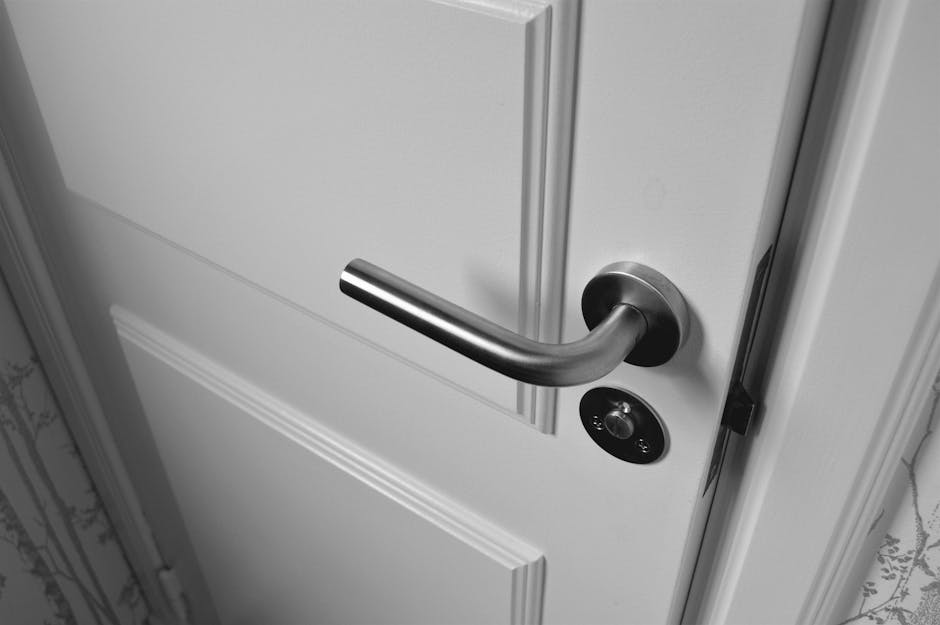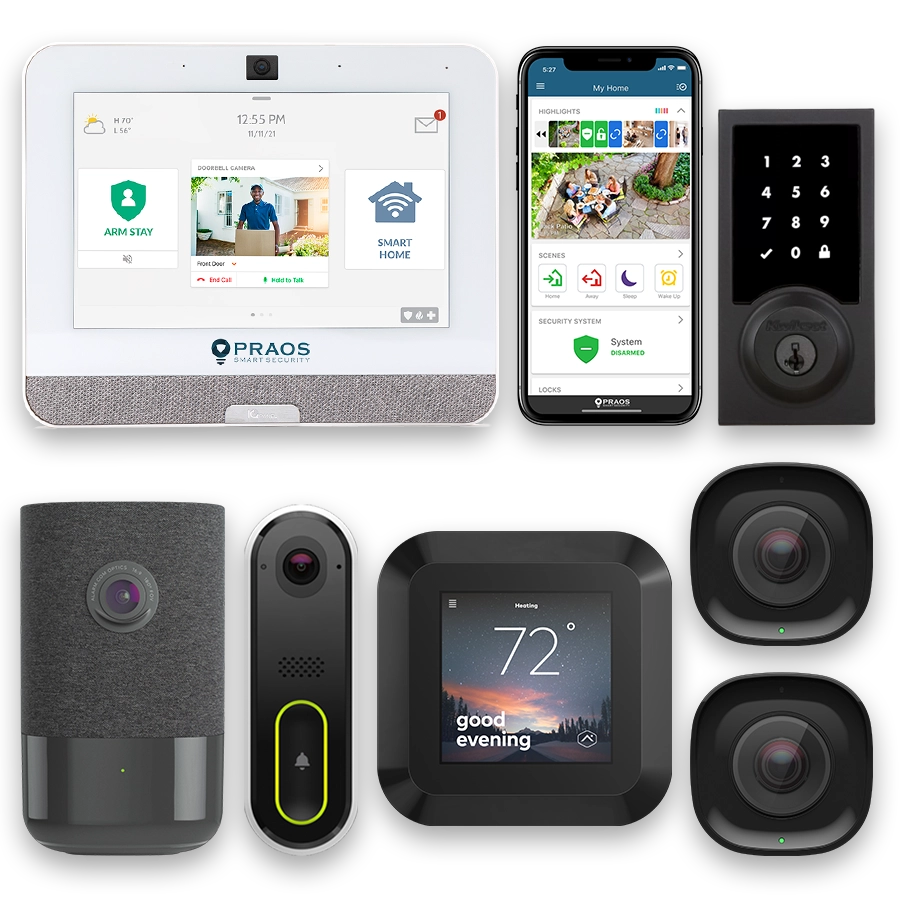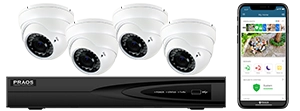Emerging Trends in Home Security Technologies
Home security technologies are rapidly evolving, driven by advancements in various fields including electronics, software, and data analysis. Examining emerging trends in home security technologies reveals several notable developments that consumers can expect to see over the next five years.
Advancements in Surveillance Systems
Surveillance systems have seen significant improvements in both hardware and software capabilities. Key developments include:
- High-Resolution Cameras: The trend towards higher resolution cameras continues, providing clearer and more detailed images. Cameras with 4K resolution are becoming more common.
- Cloud Storage: Storing footage in the cloud allows for scalable storage solutions and remote access. This trend is expected to grow as cloud services become more affordable and secure.
- Wireless Technology: Advances in wireless technologies contribute to easier installation and maintenance of surveillance systems, eliminating the need for extensive wiring.
Biometric Authentication
Biometric technologies are playing an increasingly important role in home security. These methods use unique biological characteristics for identification and are becoming more sophisticated.
- Facial Recognition: Improving accuracy and speed, facial recognition systems are being integrated into home security systems for both authentication and surveillance purposes.
- Fingerprint Scanners: Biometric locks using fingerprint scanners are gaining popularity as a secure and convenient way to control access to homes.
- Voice Recognition: Voice recognition systems are being utilized for identity verification and access control, leveraging advancements in natural language processing.
Smart Alarms and Sensors
Smart alarm systems and sensors are becoming more sophisticated, offering better detection capabilities and integration with other smart home devices.
- Multi-Sensor Devices: Modern sensors can detect a range of threats such as motion, smoke, carbon monoxide, and even water leaks, increasing their utility and protection scope.
- Smart Alarms: Alarms are evolving to include smart features such as remote notifications, automated responses, and integration with other smart home systems, enhancing their effectiveness.
- Environmental Monitoring: Sensors capable of monitoring environmental factors such as temperature and humidity are being increasingly used to protect homes from diverse threats.
Remote Monitoring and Management
Remote access to home security systems is a growing trend, driven by the increasing use of mobile devices and internet connectivity.
- Mobile Applications: Apps allow homeowners to monitor security systems, receive alerts, and control devices from anywhere, providing greater flexibility and peace of mind.
- Web-Based Platforms: Platforms accessible through web browsers offer a centralized management interface for comprehensive system control and monitoring.
- Real-Time Notifications: Immediate alerts sent to homeowners’ devices ensure timely responses to potential security breaches.
These emerging trends indicate a significant transformation in home security technologies, driven by advancements and innovations that provide improved safety, convenience, and peace of mind for homeowners.
The Role of Artificial Intelligence and Machine Learning in Home Security
Artificial Intelligence (AI) and Machine Learning (ML) are playing increasingly significant roles in enhancing home security. These technologies enable more proactive, efficient, and responsive security solutions. By analyzing vast amounts of data, AI and ML algorithms can identify patterns, detect anomalies, and make decisions with minimal human intervention.
One of the critical applications of AI and ML in home security is in the realm of surveillance. Modern security cameras equipped with AI capabilities can distinguish between various objects and activities. For instance, these cameras can differentiate between a person, animal, or vehicle, and even recognize the faces of individuals. This functionality helps in reducing false alarms and ensures that homeowners are only alerted to genuine threats.
Moreover, AI-powered security systems can learn the typical patterns of activity within a home and identify deviations from the norm. This capability allows the system to detect unusual behavior, such as unauthorized entry or suspicious movements, and promptly notify the homeowner or security providers. Facial recognition technology, bolstered by AI, is also becoming more prevalent, enabling security systems to grant or deny access based on recognized individuals.
The role of ML extends to predictive analytics, which can forecast potential security risks based on historical data. By analyzing past incidents and current trends, predictive models can offer insights into vulnerabilities and suggest preventive measures. This foresight increases the overall efficacy of home security systems, making them more robust against potential threats.
In addition, voice and natural language processing (NLP) are being incorporated into home security setups. Voice-activated systems, enhanced by NLP, allow homeowners to control their security devices using simple voice commands. This integration simplifies the user interface and offers added convenience without compromising security.
AI and ML are also integral to developing autonomous security solutions, such as drone surveillance. Drones equipped with AI can patrol properties, monitor for intruders, and provide live video feeds to homeowners or security personnel. These drones can navigate complex environments and make real-time decisions autonomously, expanding the scope of home security beyond stationary devices.
The development and deployment of AI and ML in home security are supported by significant investments and advancements in these fields. Companies like Google, Amazon, and Ring are at the forefront, integrating AI into their security products to offer smarter, more responsive solutions. The continuous improvement in AI algorithms and computational power promises even greater capabilities in the coming years.
In summary, AI and ML are revolutionizing home security by enhancing surveillance accuracy, predictive threat detection, user interaction, and autonomous monitoring. As these technologies mature, their impact on home security systems will likely grow, leading to safer and more secure living environments.
Integration of Smart Home Devices with Security Systems
The integration of smart home devices with security systems is increasingly becoming a defining feature of modern home security. As the prevalence of Internet of Things (IoT) devices grows, so does their role in safeguarding residential spaces.
Smart home devices such as intelligent locks, surveillance cameras, motion sensors, and doorbell cameras are now commonly linked to unified security systems. These integrations provide homeowners with enhanced control and monitoring capabilities, allowing for real-time updates and remote accessibility through smartphones and other devices.
One of the major factors driving this trend is the convenience and increased functionality offered by interconnected devices. For instance, smart locks can be controlled remotely to grant or restrict access, while surveillance cameras can stream live footage directly to a mobile app. These features not only contribute to improved security but also enhance user experience through ease of use.
Compatibility is a crucial aspect of these integrations. Major technology companies like Google, Amazon, and Apple offer ecosystems (Google Home, Amazon Alexa, and Apple HomeKit) that facilitate the seamless integration of various smart devices. This interoperability ensures that different devices can communicate and operate together efficiently, creating a cohesive home security environment.
The demand for such integrated systems is evident in market trends. According to a report by MarketsandMarkets, the global smart home market size is expected to grow from $78.3 billion in 2020 to $135.3 billion by 2025, at a Compound Annual Growth Rate (CAGR) of 11.6%. This growth is largely attributed to the increasing need for home monitoring systems and improved connectivity driven by advancements in wireless technologies.
Despite the benefits, there are potential challenges associated with integrating smart home devices and security systems. One of the main concerns is the complexity of managing multiple devices and ensuring their seamless operation. To address this, manufacturers are focusing on developing more intuitive interfaces and enhanced user support systems.
Moreover, ensuring the security of interconnected devices themselves is paramount. Breaches in one device can potentially compromise the entire network. To mitigate this risk, robust security protocols and regular software updates are essential. Users must remain vigilant about changing default passwords and understanding the privacy policies of their devices.
In summary, the integration of smart home devices with security systems is set to play a pivotal role in the evolution of home security. This trend promises greater convenience, enhanced control, and increased market growth, despite the accompanying challenges related to complexity and cybersecurity.
Cybersecurity Challenges for Modern Home Security Systems
Home security systems have evolved significantly with the rise of smart devices and interconnected systems. However, this technological advancement brings with it a range of cybersecurity challenges that must be addressed to ensure the safety and privacy of users.
Firstly, the increased connectivity between home security devices and networks makes them vulnerable to cyberattacks. According to a report from Symantec, a significant percentage of Internet of Things (IoT) devices, including smart locks and security cameras, suffer from security vulnerabilities. Hackers can exploit these vulnerabilities to gain unauthorized access, manipulate the systems, or steal sensitive data.
Another key challenge is the lack of standardization in security protocols across different devices and manufacturers. This often results in inconsistent levels of security, making it difficult for consumers to know which products offer the best protection. As reported by the Open Web Application Security Project (OWASP), many IoT devices lack basic security features such as data encryption, secure authentication, and regular software updates.
The proliferation of cloud-based home security solutions adds another layer of complexity to cybersecurity. While cloud services offer numerous benefits, such as remote monitoring and control, they also introduce risks related to data breaches and unauthorized access. For instance, in 2020, the smart home company Ring faced numerous security incidents where hackers accessed users’ video footage. This highlighted the need for stronger security measures in cloud-based systems, such as end-to-end encryption and robust access controls.
The increasing sophistication of cyber threats is further compounded by the users’ lack of awareness and understanding of security best practices. A 2021 study by Unit 42 found that many users do not change default passwords on their devices, making them easy targets for attackers. Educating users about the importance of setting strong, unique passwords and enabling two-factor authentication is crucial in mitigating these risks.
Lastly, the rapid pace of technological change presents a continuous challenge for home security manufacturers and service providers to keep their systems secure. Regular security updates and patches are essential, yet they are often neglected, leaving systems exposed to known vulnerabilities. Collaboration among industry stakeholders, including manufacturers, service providers, and security experts, is necessary to develop and implement effective security standards and practices.
In conclusion, while modern home security systems offer unprecedented convenience and protection, they also require robust cybersecurity measures to safeguard against evolving threats. Addressing these challenges involves a combination of improved device security, user education, and ongoing collaboration across the industry to ensure the safety and privacy of all users.
Regulatory and Privacy Considerations in Home Security Advancements
The rapid advancement of home security technologies brings with it a variety of regulatory and privacy considerations that must be addressed to ensure safe and ethical use. Governments and regulatory bodies worldwide are increasingly focused on creating frameworks that protect consumer privacy while fostering innovation in home security.
Regulatory Frameworks
As home security systems become more sophisticated, regulatory frameworks are evolving to address new challenges. For example, the European Union’s General Data Protection Regulation (GDPR) has set stringent standards for data protection and privacy, impacting how home security companies handle user data. In the United States, the California Consumer Privacy Act (CCPA) similarly establishes guidelines for data collection, usage, and sharing.
Compliance with these regulations is critical for home security companies to avoid hefty fines and maintain consumer trust. Regulatory frameworks across different regions are likely to converge over time, promoting consistent standards for data protection globally.
Privacy Considerations
Modern home security systems often include a variety of sensors, cameras, and data analytics tools that can collect extensive amounts of personal data. Ensuring the privacy of this data is a significant challenge. Key privacy considerations include:
- Data Encryption: Encrypting data both in transit and at rest to prevent unauthorized access.
- Data Minimization: Collecting only the data that is necessary for security purposes, and not retaining it longer than needed.
- User Control: Providing users with control over their data, including the ability to access, modify, and delete personal information.
Failure to address these considerations can lead to privacy breaches and erosion of consumer trust, making it imperative for companies to prioritize data protection in their product designs.
Ethical Considerations
Beyond regulatory and privacy issues, ethical considerations also play a significant role in the development and deployment of home security systems. These considerations include:
- Surveillance Ethics: Balancing the need for security with the rights to privacy and avoiding over-surveillance.
- Algorithmic Fairness: Ensuring that AI and machine learning algorithms used in security systems do not have biases that could lead to discriminatory practices.
- Transparency: Clearly communicating how data is collected, used, and shared with consumers to build trust and promote informed decision-making.
Addressing these ethical aspects is essential for fostering a fair and just use of home security technologies.
Future Outlook
In the coming years, regulatory and privacy considerations will continue to evolve alongside technological advancements in home security. Proactive engagement with regulatory bodies and adherence to best practices in data protection and ethics will be crucial for industry players. Companies that can effectively navigate these challenges are likely to gain a competitive edge and build long-lasting trust with consumers.





